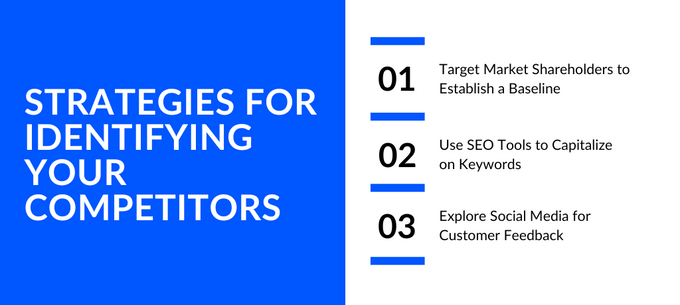Competitive Analysis for E-Commerce Market Entry: Strategies and Techniques (+ Examples)
Discover the power of competitive analysis for e-commerce market entry and learn how to outshine your rivals with strategic insights.
Published November 7, 2023

AI Summary
Entering the highly competitive world of e-commerce can be both exciting and challenging. With countless online businesses vying for customers' attention, it's crucial to have a solid understanding of the competitive landscape before making your move. This is where competitive analysis comes into play.
By conducting a thorough assessment of your competitors, you can gain valuable insights that will inform your market entry strategy and set you up for success.
Meet the Expert
Courtney Sharp is a seasoned professional writer with over 10 years in the field, founder of her own marketing agency, and a specialist in branding and social media strategy across Europe's fashion and beauty sectors. Her profound expertise offers invaluable perspectives on how influencer marketing elevates e-commerce brand visibility.
What Is a Competitive Analysis?
Competitive analysis is the process of identifying and analyzing your competitors to understand their strengths and weaknesses, and to develop strategies to differentiate your own business.
It's especially important for e-commerce businesses because the online market is so competitive. By understanding your competitors, you can identify opportunities to differentiate your business and attract customers.
When conducting a competitive analysis, it's important to consider factors such as:
- What products or services do your competitors offer?
- What are your competitors' pricing strategies?
- What are their marketing and advertising strategies?
- What are their strengths and weaknesses?
- How do they position themselves in the market?
Getting Started: How to Identify Your Competitors When You Enter the E-Commerce Market
E-commerce businesses face two main types of competitors: direct competitors and indirect competitors:
- Direct competitors sell the same or similar products or services as you.
- Indirect competitors sell different products or services, but they still appeal to the same target audience.
Let's consider Amazon as an example. eBay is a direct competitor because both are online marketplaces where customers can buy a variety of products. But Netflix, as a pure-play streaming service, would be an indirect competitor because although Amazon has a streaming arm, its main focus is e-commerce. Therefore, both platforms vie for consumer entertainment budgets.
3 Strategies for Identifying Your Competitors
Now, let's dive into practical strategies and tools for identifying competitors.
1. Target Market Shareholders to Establish a Baseline
Market shareholders are businesses that are excelling in one area of your target market. They're often leaders in their industry and have a strong following of customers. Identifying and analyzing market shareholders can help you to understand what you need to do to compete effectively. Examples of market shareholders include:
- Amazon (e-commerce industry as a whole)
- Walmart (groceries)
- ASOS (fashion)
- Best Buy (electronics)
- Wayfair (furniture)
Once you've identified market shareholders, you should analyze their strengths and weaknesses to understand what they're doing well and where you can improve.
2. Use SEO Tools to Capitalize on Keywords
Building on the previous point, you can use SEO tools like Entail AI, SEMrush, and Ahrefs to identify your top competitors—even if you're on a budget. Try:
- Researching keyword search volume, competition, and trends: This way, you can identify the most relevant and profitable keywords to target.
- Comparing search engine results pages (SERPs): You'll understand what your competitors are ranking for and how you can improve your own rankings.
- Analyzing backlink profiles: By identifying the websites that are linking to your competitors, you can develop strategies for building backlinks to your own website.
Quick Tip:
Don't focus on popular keywords only. Identify emerging brand-related keywords too because they're less competitive and offer a higher return on investment (ROI), giving you a chance to establish your presence before others.
3. Explore Social Media for Customer Feedback
Social media is a valuable resource if you want to identify competitors and USPs. One of the best ways to do this is to use Instagram's explore feature.
To find competitors, start by searching for keywords and hashtags that are relevant to your industry. For example, if you sell sustainable body care products, you could search for keywords like "sustainable body care," "eco-friendly body care," and "vegan body care." You could also search for hashtags like #sustainablebeauty, #ecobeauty, and #veganbeauty.
Once you have a list of potential competitors, take some time to explore their accounts and learn more about their USPs. What makes their products or services unique? What are their customers saying about them?
» Take some inspiration from Bang Energy on how to harness the power of social media
Analyzing Your Competitor's Strengths and Weaknesses
By understanding your competitors' strengths and weaknesses, you can develop strategies to differentiate your business and attract more customers. This means blending qualitative and quantitative data and a bit of help from analytics apps. Here's how to get started:
Qualitative Insights from Social Platforms
Social media is a great place to gather qualitative insights about your competitors. Pay attention to the following factors:
- Brand personality: Are your competitors communicating their brand personality effectively? What are their customers saying about them?
- Customer engagement: How responsive are your competitors to customer comments and questions? Do they encourage engagement and build relationships with their customers?
- Proactivity: Are your competitors proactive in sharing new products, promotions, and other valuable content with their customers?
E-Commerce Presence Evaluation
In addition to social media, you should also evaluate your competitors' e-commerce presence. Consider the following factors:
- Website loading speed: Website loading speed is a critical factor in e-commerce. Make sure your website loads faster than your competitors' websites.
- Delivery options: Free delivery is a major competitive advantage so consider offering free delivery if possible.
- Product reviews: Make sure you have a robust product review system in place to capitalize on user-generated content.
- Pricing strategies: Compare your competitors' pricing strategies to your own. Are they pricing their products or services higher or lower than you? What factors do they seem to be considering when setting their prices? Identify any areas where you have a pricing advantage.
Key Performance Indicators (KPIs)
Quantitative data can also be very helpful for analyzing your competitors. Here are a few key performance indicators (KPIs) that you should track:
- New customer visits: This is a critical metric for e-commerce businesses, especially during the growth phase.
- Social followers: Tracking the growth of your competitors' social media accounts can give you a general indication of their brand visibility and reach.
- Email list and subscribers: Your email list is one of your most valuable assets. Track the growth of your competitors' email lists to see how you compare.
- Conversion rate: Your conversion rate measures the percentage of visitors to your website who make a purchase. Track your conversion rate over time and compare it to your competitors' conversion rates.
- Average order value (AOV): Your AOV measures the average amount of money that customers spend on your website. Track your AOV over time and compare it to your competitors'.
Remember, competitor analysis is an ongoing process. As market dynamics shift, so will the strengths and weaknesses of your competitors.
Competitive Analysis in Practice: 2 Short Case Studies
Example #1: Quality Matters
We spotted a golden opportunity about a year ago when one of our main competitors faced product quality issues. Although it appeared to be a batch problem, disgruntled customers flooded social media, even among their loyal customer base. As market shareholders ourselves, we couldn't let this chance slip by. Here's what we've done:
- In-depth research: We gathered valuable insights into what customers said about the competitor's brand.
- Strategic marketing: We devised a marketing strategy centered on comparison review content.
- Influencer partnerships: We partnered with influencers to create review content across platforms like Instagram, TikTok, and YouTube.
The Outcome: By addressing the quality issue head-on, we retained our customer base and attracted a significant portion of the competitor's loyal customers. This mid-funnel strategy leveraged informative content and reviews, positioning our brand as a superior alternative.
Example #2: Nurturing the Customer Lifecycle
In another instance, we faced a market shareholder competitor excelling in synthetic hair extensions. As our client's brand strength lies in human hair extensions, we recognized a gap in their customer lifecycle nurturing, and we seized the opportunity. This is what we've done:
- Retention focus: We built a comprehensive retention strategy for new customers who had initially purchased synthetic hair extensions.
- Multi-level funnel: We designed a multi-level funnel to engage these customers at different journey stages.
- Email and social retargeting: Email and social media played a crucial role in our retargeting efforts.
The Outcome: Our strategy helped us gain new customers from our competitors and effectively nurtured them from entry-level synthetic extensions to more permanent human hair extensions. We created a retention loop that turned one-time buyers into loyal, long-term customers.
Final Thought: Conduct Continuous Competitive Analysis
It's crucial to view competitor and market research as an ongoing and dynamic process. Given the rapid changes in trends, strategies, and customer sentiments, we recommend establishing an internal team dedicated to competitor analysis and community management. A community manager plays a pivotal role in tracking market dynamics, gathering customer feedback, and identifying emerging trends, thus providing invaluable insights for informed decision-making. To thrive in the e-commerce realm, adaptability, differentiation, and strategic investments in resources are your secret weapons in a world defined by change.







